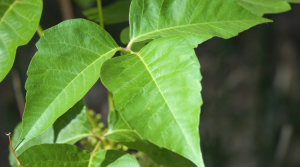 You’ll be repeating the age-old “leaves of three, leave it be” mantra a lot more this year, as poison ivy plants are popping up at an accelerated rate throughout Central Texas.
You’ll be repeating the age-old “leaves of three, leave it be” mantra a lot more this year, as poison ivy plants are popping up at an accelerated rate throughout Central Texas.
As cooler weather hits the region and more residents make their way outdoors for hikes, bike rides and camping trips, you might notice an uptick in the amount of poison ivy along the trails. You can thank this past summer’s unseasonably rainy weather for that and other plants’ more pronounced growth, officials with the Texas Parks & Wildlife Department said.
How to identify poison ivy
While most know poison ivy as a green three-leaf plant, its colors and edges can vary. Leaves can have either smooth, notched or “toothed” edges, according to the TPWD.
Its colors vary depending on the season and maturity of the plant, per TPWD. In the springtime, new leaves are read, while dying ones are yellow. During the fall, leaves can appear as either yellow, orange or red.
Poison ivy’s forms also vary. Some take on a vine-like structure and can climb surfaces, while others might appear as a shrub or miniature tree. While most plants typically have three leaves, some iterations include five, per TPWD.
Poison ivy is a year-round plant in Texas, with all parts of the plant toxic throughout the four seasons.
What should I do if I’ve been exposed to poison ivy?
The best prevention method against poison ivy is through wearing layers of clothing that protect and limit the amount of exposed skin. If a person comes into contact with poison ivy, the TPWD said they should remove their clothing as carefully as possible, immediately washing them as well as any exposed skin with soap and plenty of water.
If the exposed area of skin isn’t immediately washed, symptoms develop within 12 to 36 hours after exposure, per TPWD. The most common symptoms include an itchy, burning rash and blisters. Severe exposures could result in bigger blisters and skin swelling.
Hydrocortisone creams and lotions can be used to treat rashes, in addition to frequently cleaning the area and keeping it dry.
Source: www.kxan.com









